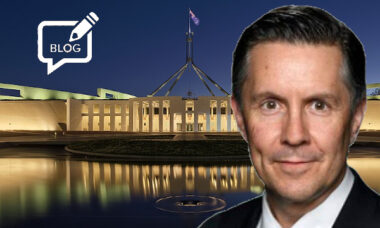 Health minister Mark Butler wasn’t mincing his words. “Australia needs to reclaim its position as a world leader on tobacco control,” he said.
Health minister Mark Butler wasn’t mincing his words. “Australia needs to reclaim its position as a world leader on tobacco control,” he said.
Which rather begs the question of how it ever lost that position – if, indeed, it has. If any country beyond the tiny Himalayan kingdom of Bhutan was going to ban tobacco or nicotine products altogether, Australia might be the most likely contender.
It banned personal imports of combustible cigarettes a few years ago, and since October 2021 nicotine-containing e-cigarettes have required a doctor’s prescription. Now, declaring that vaping is “creating a whole new generation of nicotine dependency”, Butler has announced his intention to ban the importing of nicotine-free e-cigs too, making them available from pharmacies only. The logic of which is not immediately apparent.
More understandable, perhaps, are his stated aims of raising e-cig quality standards by restricting flavours, colours and other ingredients; reducing the allowed nicotine concentrations and volumes; and banning single-use disposables.
An insistence on “pharmaceutical-like packaging” makes sense, too, in the context of a pharmacy-sales-only regime, and in tandem with a plan to make prescribing e-cigs for adult smoking cessation easier. (Whether this will actually come to pass, and importantly whether doctors will in practice go along with it, remains to be seen. Up to now, there’s no real medical e-cigarette market in the world, and no prescription model for vaping that really works.)
‘Recreational’ vaping
It would also be consistent with Australia’s place in history as the first country to enforce uniform drab packaging for cigarettes, a requirement first laid down in 2012 and copied in a number of other countries since. Especially if, like Butler, you see no clear distinction between “tobacco control” and e-cigarette control.
Of course, he’s far from alone in that failure to distinguish one form of nicotine product from another (or, as it would seem, nicotine from not-nicotine).
Heads will have been nodding in many places too when he said: “Vaping was sold to governments and communities around the world as a therapeutic product to help long-term smokers quit. It was not sold as a recreational product – especially not one targeted to our kids – but that is what it has become.”
Well, maybe. But how interesting, considering the actual difference between cigs and e-cigs, to note the radically divergent approaches of Australia and New Zealand, its neighbour and traditional rival.
New Zealand’s health minister Ayesha Verrall immediately went out of her way to say there would be no attempt under the present government to take similar anti-vaping measures to Australia. While Butler said his government had no plan to follow New Zealand’s policy of barring combustible cigarette sales forever to anyone born on or after 1st January 2009.
A policy which you could say makes New Zealand the world leader in tobacco control, while for Aussies it remains easier to buy smokes than vapes.
– Aidan Semmens ECigIntelligence staff






